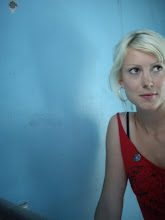
Eugene Atget:
French Photographer known for photographing the architecture and street scenes of "old Paris" between 1897 and 1927. Saw photography as a source of income, advertising his photography as "documents for artist" (common for artists to paint from photographs). Photographed Paris with large-format wooden bellows camera with a rapid rectilinear lens. His subjects ranged
from architecture, urbane
nvironment, street hawkers, tradesmen,
prostitutes and the homeless. Photography was characterised by his wispy, drawn-out sense of light due to the long exposure. The wide view sugge
sted space and ambience more than surface detail. He photographed early morning before
pedestrians and traffic appeared. He avoided perfection and approached his subjects with humanism.

Joel Meyerowitz:
N.Y.C. street photographer. Early advocate of using colour during a time of resilience to the idea in 1962.
Changed to large format in 1976. Meyerowitz came to photogr
aphy in 1962 by "finding and rescuing the invisible moment". The initial and fascination was with the immediacy of events the way things happen and then disappear forever. He explains that
using a larger format camera "it amplified my own curiosity about how to describe the world i live in." 1991 he transfered his entire personal archive to digital format. He was the official photographer of the World Trade Centre attacks and said to "translate the chaos of the city." He has an acute sensitivity to everything around him.
www.pdngallery.com/legends/meyerowitz
 August Sanders:
August Sanders: German portrait and documentary photographer. Spent his military service,
1897-99 as a photographers assistant. First book "Face of our Time," 1927 included 60 portraits from his series "People of the 20th Century." His work was constrained due to Nazi regime and seized in 1936. He aimed to show a cross section of society during the Weimer republic. S
eries was divided into 7 sections, The Farmer, The Skilled Tradesmen, Women, Classes and Professionals, The Artists, The City and The Last People (homeless and veterans).

Alexander Rodchenko:
Russian artist, sculpture, photographer and graphic designer. One of the founders of constructivism and Russian design. Known for his Photomontages that were socially engaging, formally innovative and opposed painterly aesthetics. Often shot his subjects numerous times and from odd angles usually from above or below, to shock the viewer and to postpone recognition. Impressed by German Dadaists photomontages, he experimented in the medium, first in 1923 using found images and in 1924 he started to use his own photographs, as he was unable to find suitable subject images. Often related to poster art and book design. Famous artwork include his illustrations of Vladimir Mayakovski's poetry Preto (About This). He integrated elements of line such as stairs, grids, overhead wire into his artworks. Used a Leica camera as it had freedom from the tripod and 'belly button' photography.

No comments:
Post a Comment